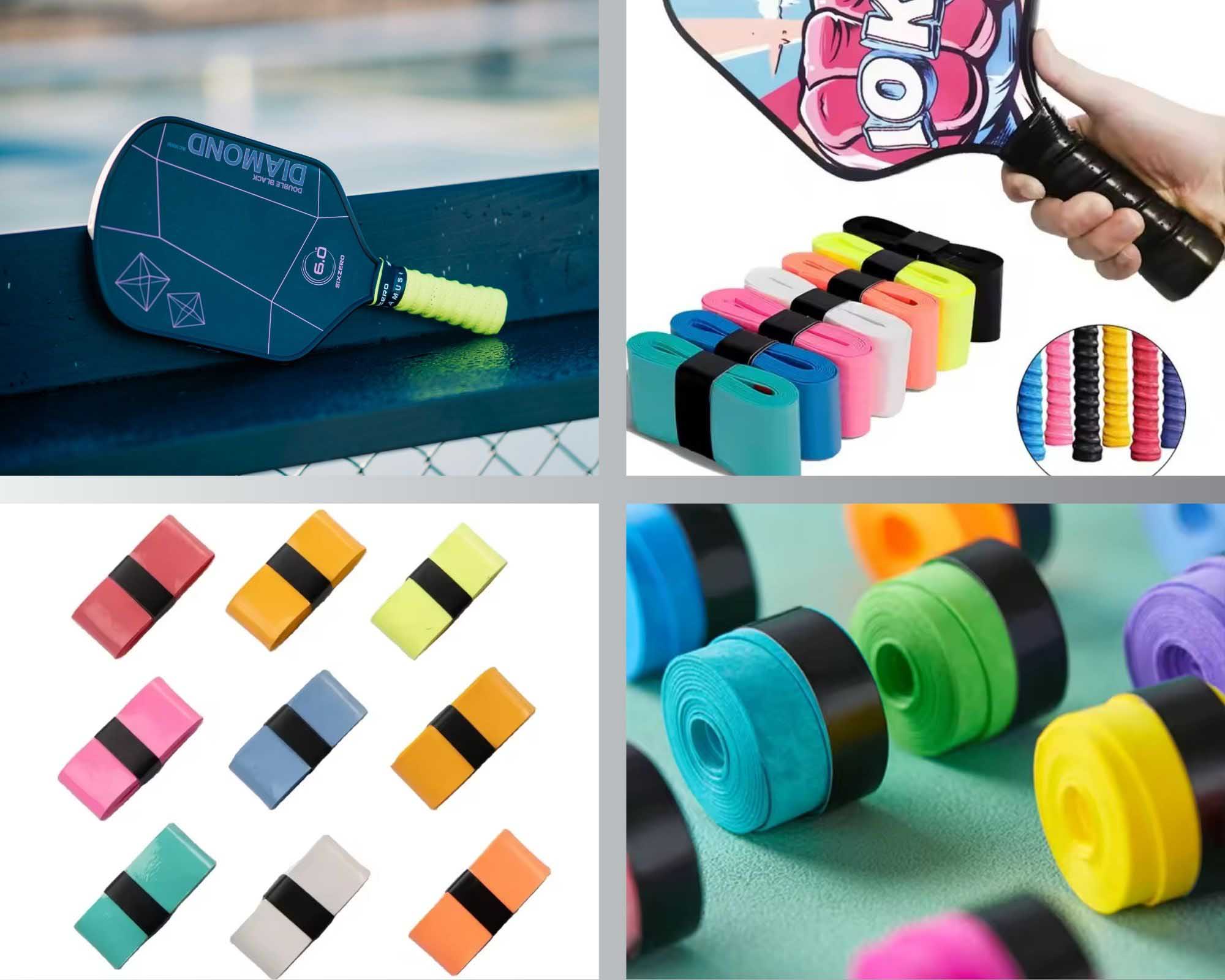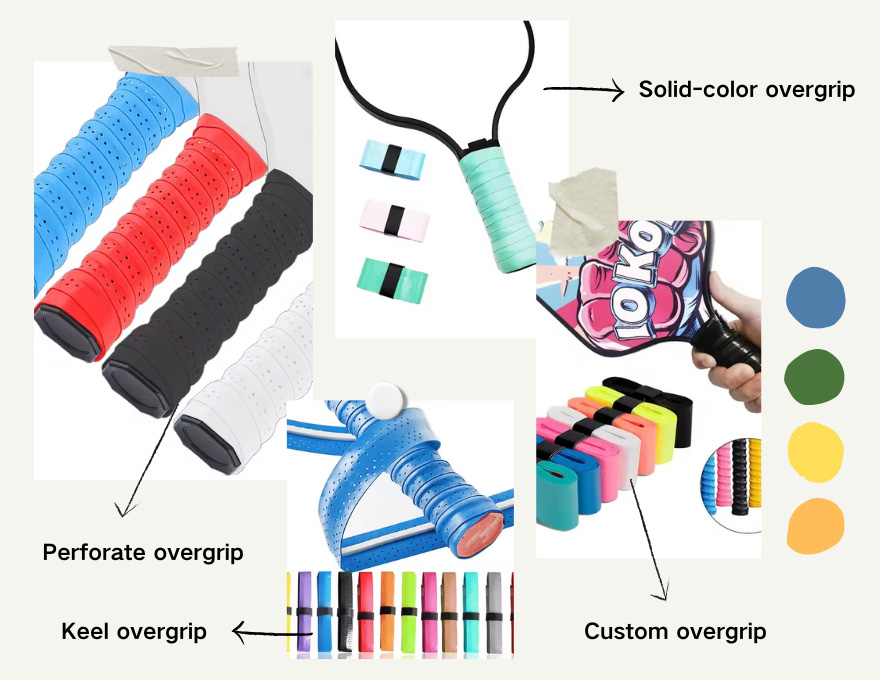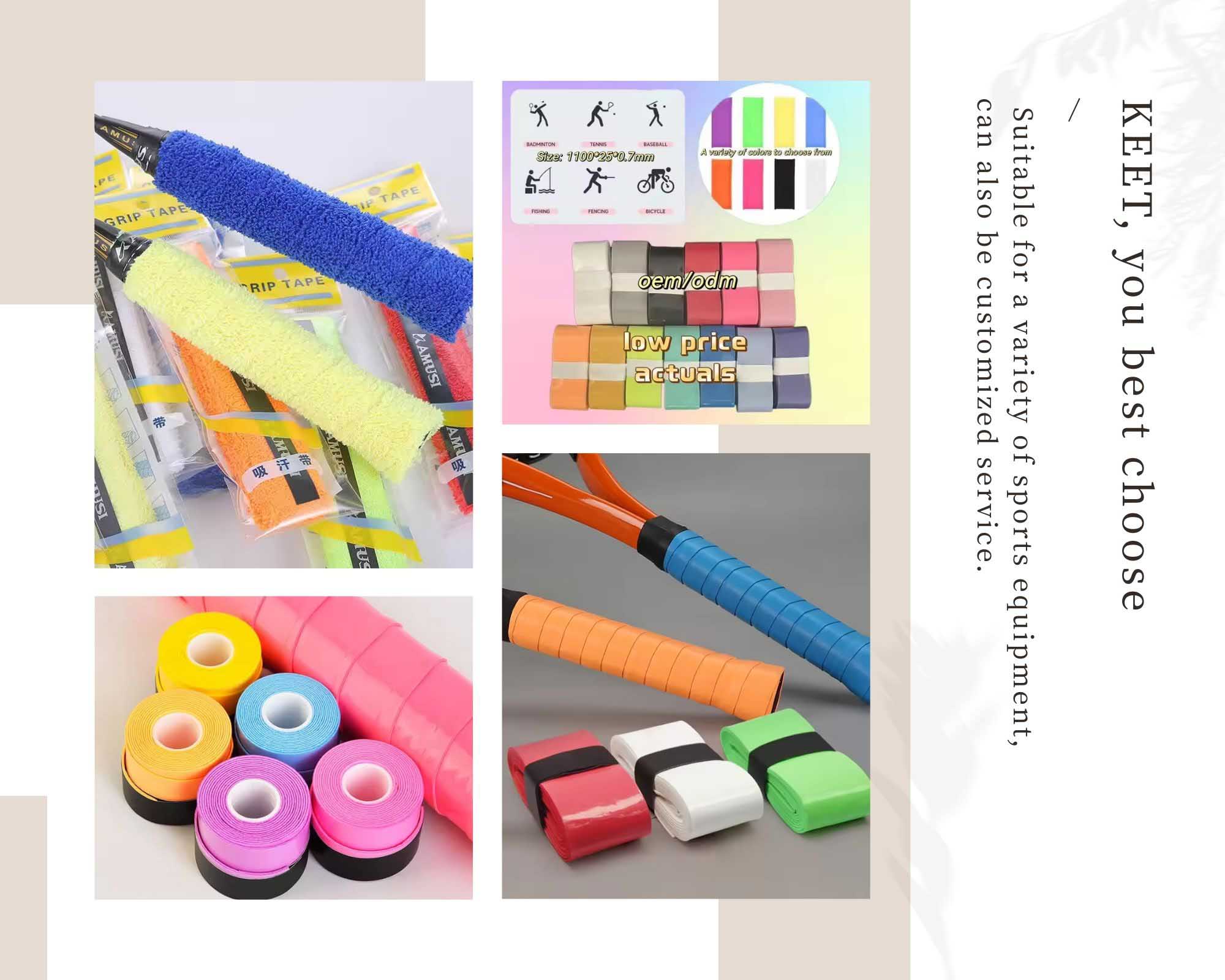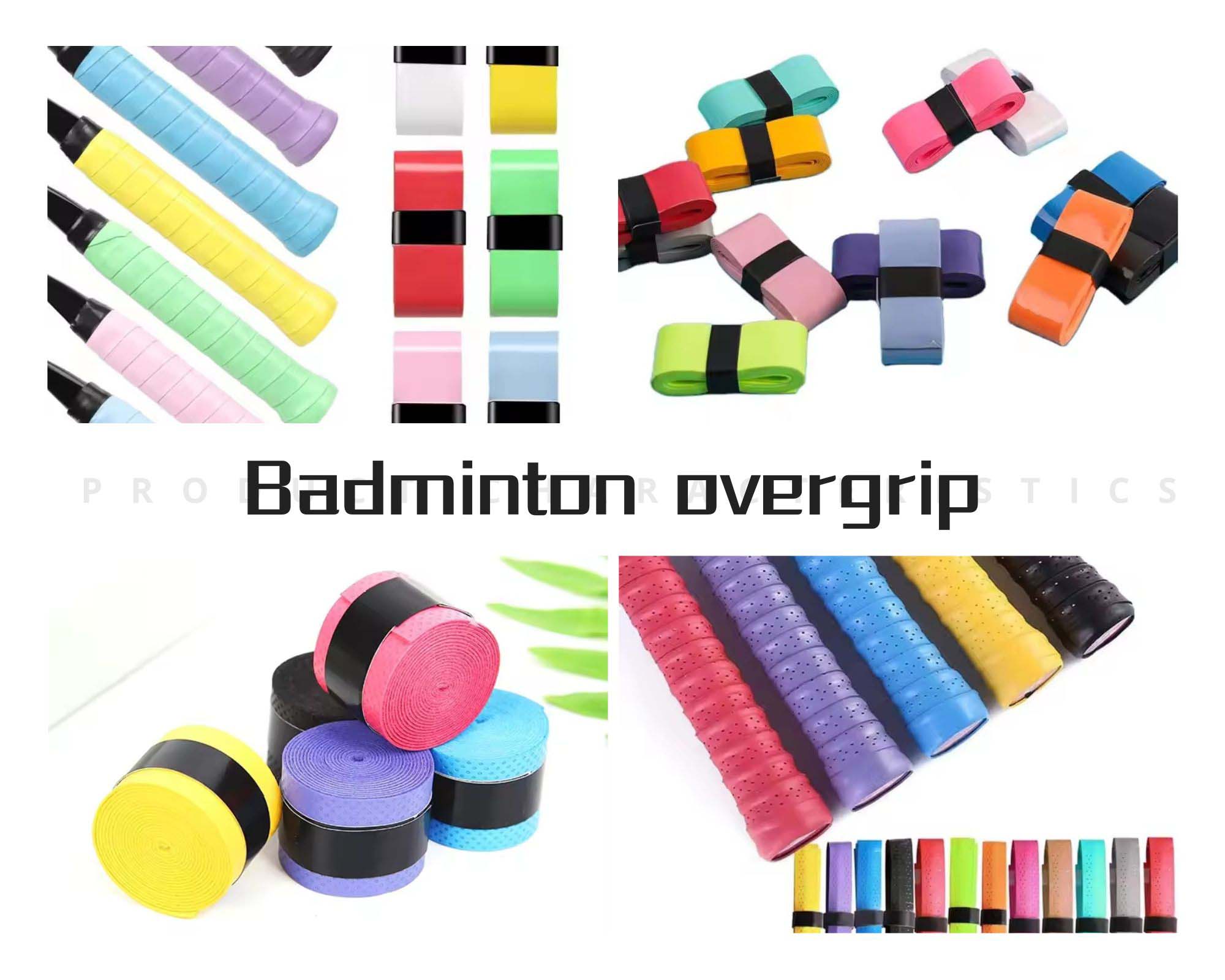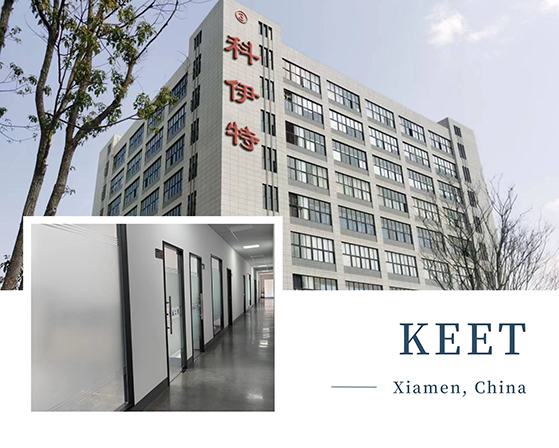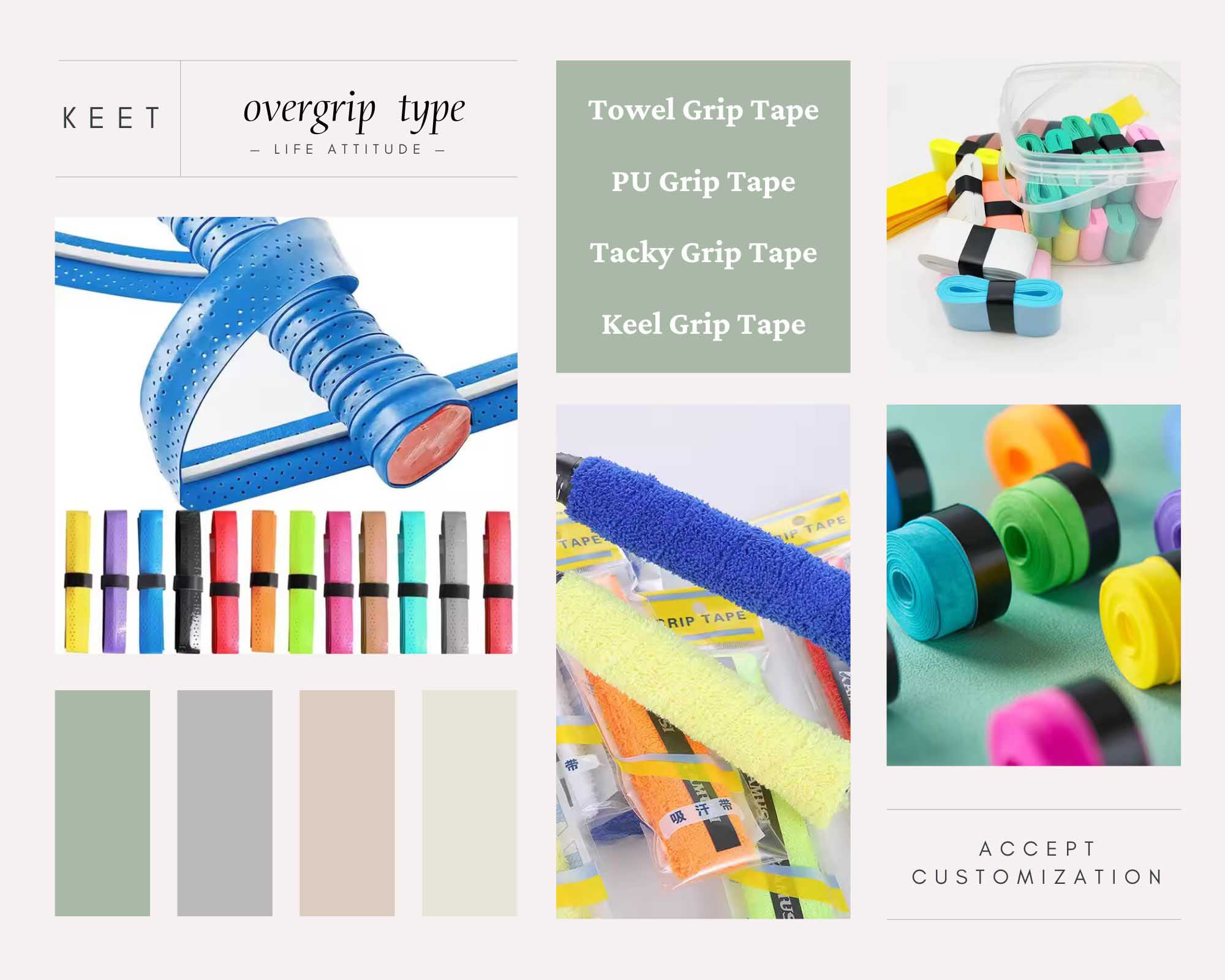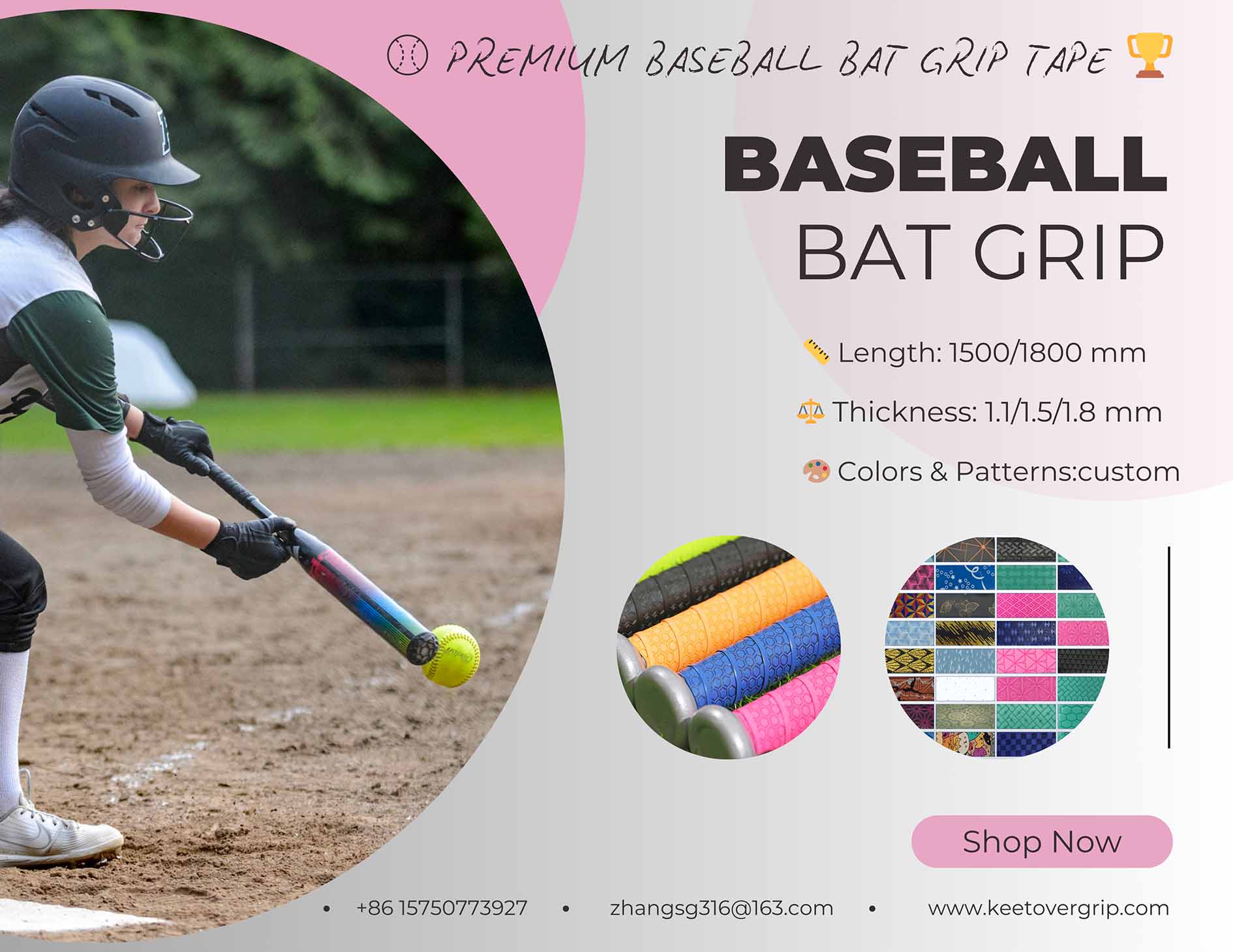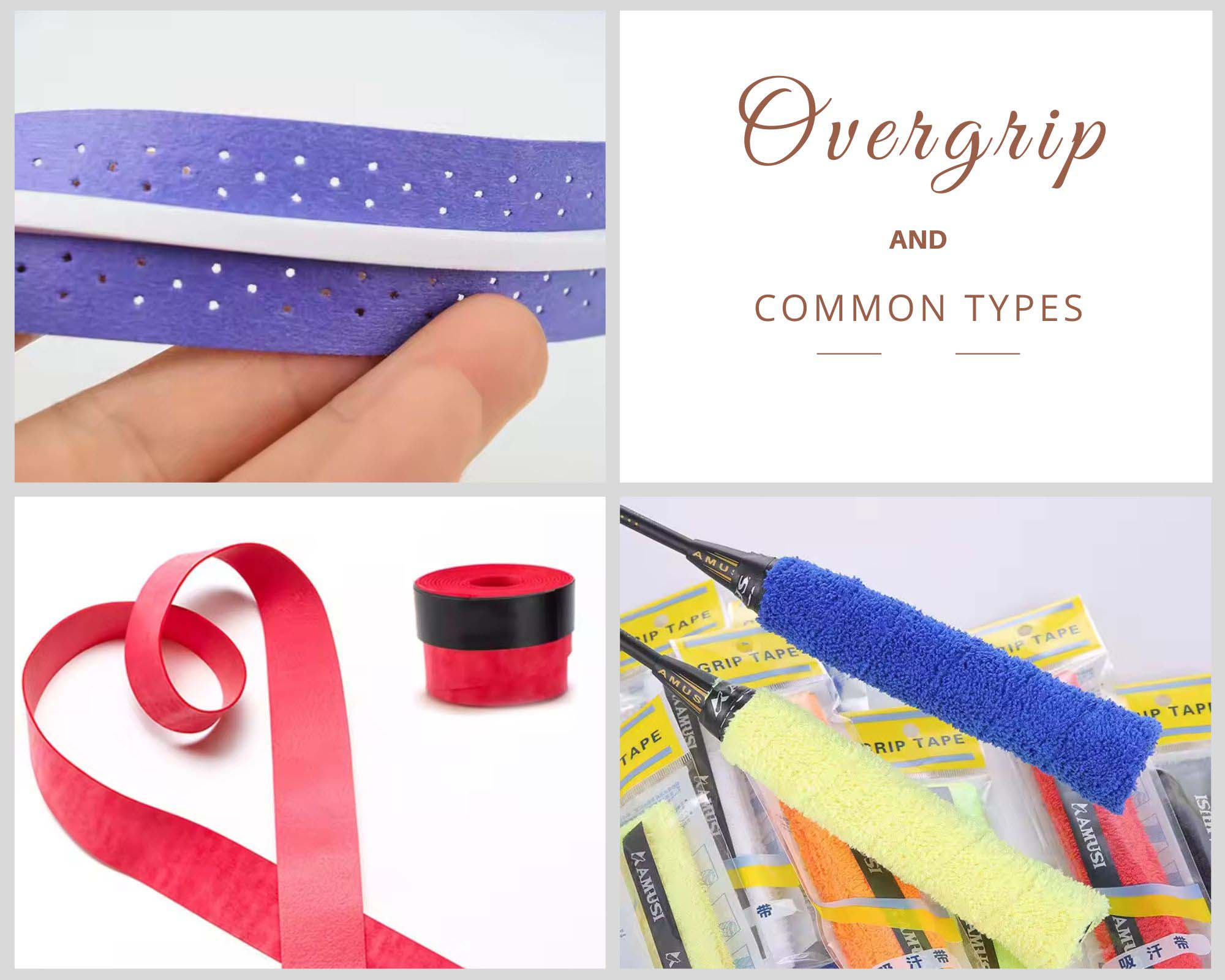Selecting the right tennis grip tape is an integral part of enhancing your gameplay and ensuring comfort during matches. With a variety of options available, understanding the different types and their unique characteristics is key to making an informed decision. This guide will introduce you to three main types of tennis grip tape: towel grip tape, keel grip tape, and solid-color grip tape. We will go into depth about their definitions and their respective functions to help you find the best overgrip product for your needs.
Towel grip tape is renowned for its exceptional sweat absorption and enhanced grip. This type of grip tape is characterized by a layer of soft, absorbent towel material adhered to a sticky base. The towel fabric provides a tacky surface that helps keep your hand securely on the racket, even during the most intense rallies. Its primary advantage lies in its ability to manage sweat effectively, making it an ideal choice for players who tend to sweat heavily during play. Additionally, the towel material offers a plush feel, adding an extra layer of cushioning between your hand and the racket handle. However, it is worth noting that towel grip tape tends to wear out faster than other types due to the abrasive nature of the fabric and the frequent need to replace it when it becomes saturated with sweat.
Keel overgrip, there is a sponge strip in the middle of the grip. This design not only adds aesthetic appeal but also serves a functional purpose by providing a secure and stable grip. The raised ribs create channels for airflow, keeping your hand cooler and reducing sweat accumulation. The material is typically a blend of polyurethane (PU) and other synthetic fibers, offering a tacky feel that adapts well to varying levels of humidity. Keel grip tape is favored by players who seek a balance between comfort, control, and durability. Its textured surface promotes better racket handling, especially during fast-paced matches, and its resilience ensures it holds up well over time.
Solid-color overgrip is a classic choice that offers a simple yet effective solution for tennis players. This type of grip tape is characterized by its smooth, uniform surface and comes in a wide range of colors to suit individual preferences. Made primarily from PU or similar materials, solid-color grip tape provides a consistent tackiness that helps keep your hand in place during play. Its simplicity is a selling point, as it allows players to focus on their game without distractions from elaborate designs or textures. Solid-color grip tape is also known for its ease of application and removal, making it a convenient option for those who prefer to change their grip tape frequently. While it may not offer the same level of sweat absorption as towel grip tape or the textured grip of dragon bone tape, solid-color grip tape remains a popular choice due to its reliability, affordability, and versatility.
In summary, choosing the right tennis grip tape involves understanding the distinct features of each type. Towel grip tape excels in sweat management and comfort, dragon bone grip tape offers a secure and stable grip with enhanced airflow, and solid-color grip tape provides a simple, reliable, and versatile option. Customers can choose different types of overgrip according to brand needs, and players can choose the right overgrip according to their own personal. Choose right overgrip, improve the tennis experience.
